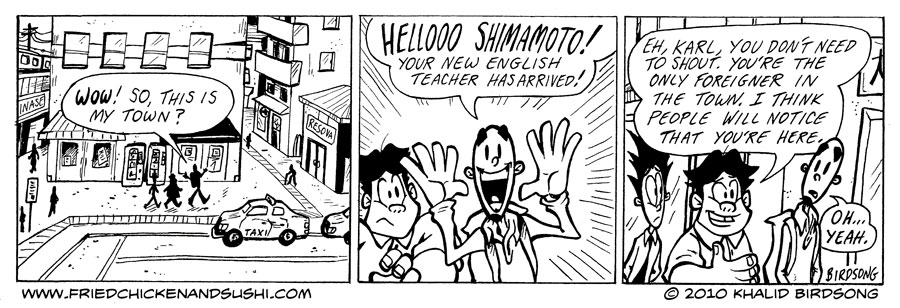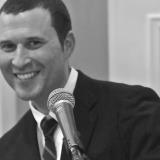Former AJET Chair Announced as Senior Staff of Osaka Prefectural BoE’s New English Education Reform Team
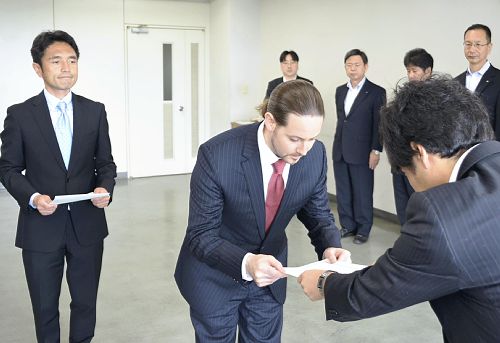
Former AJET Chair Matt Cook (Osaka-fu, 2007-12) receives his appointment to the Education Reform Team for Osaka Prefecture’s Board of Education.
Former AJET Chair Matthew Cook (Osaka-fu, 2007-12) has been announced as “Shusa” (“Senior Staff”) at the Osaka Prefectural Board of Education. His role will be working with all levels of English Educational Affairs and working as a member of the new English Education Reform Team.
Matt may be the first ever non-Japanese person to hold a senior level full-time position at a Board of Education in Japan*. (If anyone is aware of other examples, please post in the comment section.) Among other things, it is also encouraging to see a JET alum with an opportunity to play a substantive role in English education reform in Japan.
Matt has spent the past ten months working for the Osaka Prefectural Board of Education as a the Program Coordinator for their Native English Teacher (NET) Program (somewhat akin to being a JET Program Coordinator at CLAIR) following his completion of five years as a JET ALT in Osaka-fu and serving one year as AJET’s national council Chair.
Omedetou, Matt-san! Ganbatte kudasai and yoroshiku onegaishimasu!
Here’s a link to the article about the announcement in the Yomiuri Shimbun (Japanese only): http://www.yomiuri.co.jp/kyoiku/news/20130522-OYT8T00381.htm (If anyone readers could provide a short summary in the comment section, by the way, that would be greatly appreciated.)
*Note: I learned there have been other former JETs and other non-Japanese who worked as advisors and in other roles for the Osaka Prefectural Board of Education. However, my understanding is that none of them worked at the policy-making level. Here’s a 2003 article from The Guardian that quotes one in particular who seemed to have some good insights into reform and Japanese language education, Huw Olphant: http://www.guardian.co.uk/education/2003/jan/30/tefl Huw currently works as Head of Society and English Education for the British Council in Japan and was apparently mentioned in Importing Diversity, a book about the JET Programme published in 2000.
*********
Update 06.01.13
*********
Thanks to current JET Kevin McCoy for summarizing some of the above Daily Yomiuri article:
このうち、元滋賀県立高英語教諭でハーバード大教育大学院で教育修士号を得た武田浄さん(46)と、府内で外国語指導助手などを約6年間務めた米国籍のマシュー・クックさん(34)の2人を、この日、任期付き職員として採用した。他の5人は、英語に堪能な府教委職員で、従来の担当と兼務する。
Two the seven team members, Takeda Kiyoshi (46), a former English teacher at Shiga Prefectural High School, who received his Master’s degree at Harvard University Graduate School, and Matthew Cook (34), an American who worked for approximately 6 years as an ALT for the prefecture, were hired as “shokuin” (staff) with a limited period of appointment. The other 5 members are all staff at the prefecture’s Board of Education with exceptional English skills who will also serve their usual “tanto” (staff) positions.
Kevin also found the following report which is a little more specific with regard to titles:
http://www.nnn.co.jp/dainichi/news/130521/20130521032.html
同チームは7人で構成。これまで英語教育に携わってきた職員に加え、ハーバード大教育大学院で教育修士号を取得し、国内の公立中高で教諭経験がある武田浄さん(46)と、バージニア工科大卒で府教委の外国人英語指導員などに就いてきた米国国籍のマシュー・クックさん(34)を、それぞれ参事と主査で任期付き採用した。武田さんの任期は2016年3月末までで、クックさんの任期は2015年3月末まで。
The team is made up of 7 members. In addition to staff who have been involved in English education until now, Kiyoshi Takeda (46) […] and American national […] Matthew Cook (34) were each hired as “sanji” and “shusa”, respectively. Takeda’s appointment is until the end of March 2016, and Cook’s appointment will last until the end of March 2015.
Kyodo News “Rural JET alumni” series: Darryl Wharton-Rigby (Fukushima)
News agency Kyodo News has recently been publishing monthly articles written by JET alumni who were appointed in rural areas of Japan, as part of promotion for the JET Programme. Below is the English version of the column from April 2013. Posted by Celine Castex (Chiba-ken, 2006-11), currently programme coordinator at CLAIR Tokyo.
***********
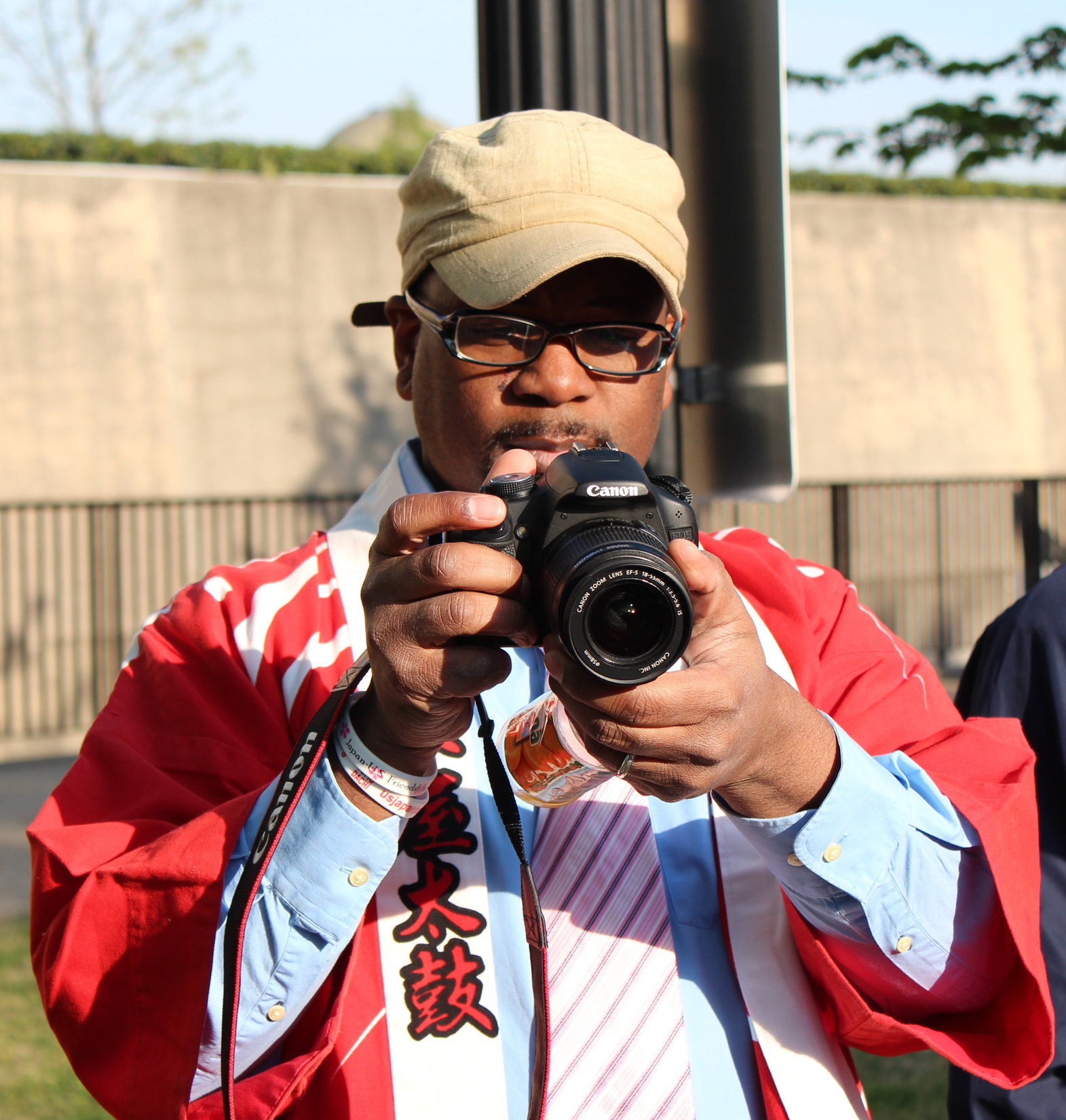
“I do not know how much of an impact I will have on the people I have met while I have been in Japan but I do know they have had a great impact on mine. Had I not applied for the JET Programme, I do not know what my life would be today.”
Writer, director, and professor, Darryl Wharton-Rigby (Fukushima-ken, Kawamata-machi, 2005-07) hails from a family of poets and storytellers in Baltimore, Maryland. He has earned a BA in History from Ithaca College and a MFA in Film Directing from Chapman University. After being hired by MTV Films to write a screenplay based on the Japanese manga TokyoTribe 2, he moved to Japan and taught English in a small town in Fukushima. He shot his latest short film, Obon, in the town of Natori, which is one of the areas of Japan hardest hit by the earthquake and tsunami. He is now working on a documentary, Don Doko Don: The Yamakiya Taiko Club Story, about a group of young drummers who were displaced due to high levels of radiation in their community from the failed nuclear plant. He has earned awards and grants from the Urbanworld Film Festival, the Maryland State Arts Council, The Painted Bride Arts Center, the Black Filmmakers Hall of Fame, and the Caucus Foundation for his work. He splits his time between Baltimore, Los Angeles and Japan where he currently lives, and credits his wife and three children as his ultimate muse.
A lifetime of happiness
One of the most satisfying and rewarding jobs in my life was working as an ALT in Kawamata in Fukushima Prefecture, Japan from 2005–2007. I have learned over the years that everything happens for a reason and that sometimes in life we are chosen to be at a certain place at a certain time.
I was 37 years old and living in Los Angeles, CA. I was living the life of a struggling filmmaker and needed a change, a break, from my career in film, television, and theatre. Since my first trip to Tokyo on a business trip for MTV I had been longing to return to Japan, because I knew there was more for me to learn and know about Japan. Applying for the JET Programme seemed the perfect opportunity.
From the moment I got accepted, life has moved at a rapid pace. I was placed in Kawamata, in Fukushima Prefecture, a quiet town with rice fields and rivers surrounded by mountains. My life in Kawamata was an adventure every day. I worked in two junior high schools, several elementary schools and kindergartens. It always brought a smile to my face, when I would hear students call my name, “Dariru-sensei!” I did my best to help the Japanese teachers in the classroom with activities and games. I got to know many of the students and could tell the ones who were enthusiastic towards learning English. Read More
JET alum’s “Man of Steel” passion project
An interesting passion project produced by videographer Patrick Lee (Nagasaki-ken, 2010-2012). More of his videos can be seen on his Youtube Channel. He can be contacted through Facebook and Twitter.
Here’s a little background from the WILL & TALE site:
Like many fans, we’ve been anxiously awaiting the release of Man Of Steel since it was announced a few years ago. Taking inspiration from diehard fans who created unofficial title sequences for films such as Adventures of Tintin and X-Men: First Class, we wanted to see how far we could go with this same idea. The result is a passion project – the culmination of many long nights and weekends over the past three months.
The story we developed is a take on our favorite superhero, Superman. We created a narrative of news anchors and eyewitnesses highlighting major events throughout Clark Kent’s life. It was important to have Clark’s story told by the world and show how he has impacted the lives of others.
Nothing in the video has been pulled from a video game or other movie footage. We created all the 2D/3D animations, compositing, articles, voiceover recordings, and more.
CLAIR Magazine “JET Plaza” series: Jordan Patrick Lincez (Aichi)
Each month, current and former JET participants are featured in the “JET Plaza” section of the CLAIR Forum magazine. The May 2013 edition includes an article by JET alumn Jordan Patrick Lincez. Posted by Celine Castex (Chiba-ken, 2006-11), currently programme coordinator at CLAIR Tokyo.
***********
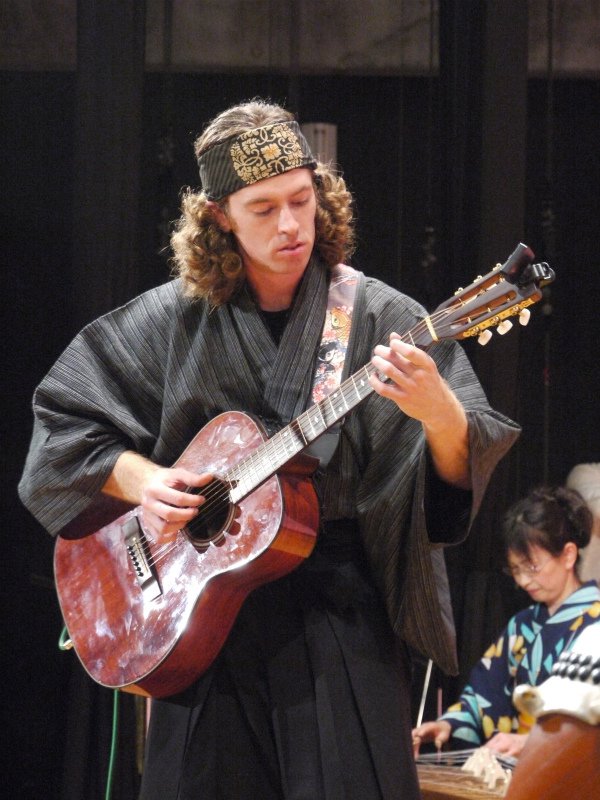
“Through the people I meet, I feel as though I have a responsibility to share my love and experiences of Japan to strengthen and sustain the bonds that were tied in fellowship and goodwill.”
Jordan Patrick Lincez (Aichi-ken, Toyone-mura, 2009-11) is from Ottawa, Ontario, Canada. He has been playing various instruments from a young age, first learning the guitar from his father Marc Victor, and eventually making an album with him before joining the JET Programme. Jordan spent two years in one of the smallest villages of Japan and his contributions to the community include recording a collaborative album with local musicians and organizing a charity music festival. He is now studying in Vancouver, BC, to become a French teacher in elementary schools in rural Canada.
After JET – Rural Reflections
Steve Jobs once talked about connecting the dots only after you go through something. Coming to and leaving Toyone was like that. My memories of there are vivid: wet mornings with mists floating above green mountains around Tsugawa Heights; straining to keep my eyes open and my body moving to the drum on Hana Matsuri; watching the evening sun burst in orange and red leaves during the autumn foliage season on my drive to Toyama; listening to my students practice Kendo in the dojo while watching the snow gently falls outside; joining my friends in celebrating our charity festival’s success with the most bountiful yakiniku feast I have ever seen. I have left Japan with a wealth of memories and friendships that I will carry with me forever, and it was only in connecting the dots looking back that am I able to see the impact my experiences there have had on my life and current endeavors.
What brought me to Japan? I wanted a new challenge, and, one day, I met a wonderful teacher in Ottawa who taught me Japanese, but also taught me about Japanese culture—and I was fascinated with it. I had to go experience it. I had to get out of Ottawa, out of Canada, and learn about myself through experiencing life in a different world. JET brought me to Japan and placed me as an ALT in two of the smallest villages in Japan: Toyone and Toyama in Aichi Prefecture. Read More
Life After JET: Teaching perspective from Kevin Stein
A great post about teaching from “The Other Things Matter,” a great blog by Osaka-based ESL teacher Kevin Stein. Kevin is also the author of the article “Even a Native Speaker Stops Sometimes: Helping Japanese Learners to Understand What is Said.”
As many flavors of failure…
I came over to Japan for my first English language teaching job on the Japan Exchange and Teaching Program. It was 14 years ago. I was living way out in the countryside and always looked forward to our big prefectural trainings. At that time, the program directors gathered up the assistant language teachers twice a year and plunked us all down in a hot-spring hotel for three days. During those trainings, I first learned how to use the International Phonetic Alphabet as a tool for pronunciation work. I learned about how to help students adjust to ambiguity in the language classroom (something I recently revisited thanks to the spring issue of The English Connection). And oddly (or perhaps not oddly at all), I met John Fanselow for the first time. He gave a lecture on partial information which has stayed more than partially with me for over a dozen years.
I also remember one more presentation from the first training I attended. It was only thirty minutes or so long. It was given by a very unassuming high school teacher from Japan. He wore a short-sleeved cream colored button-down shirt with a brown necktie. He stood at the front of the room and started telling us about his bullet-train ride into the conference. He hadn’t brought much cash with him, so he bought a cheap Japanese lunch-box before getting on the train. He put his luggage and Japanese lunch-box on the rack above his seat, nodded to the business man sitting next to him, and then promptly took a nap.
When he woke up, he felt a little hungry, so he pulled down his lunch box. He was pleased to find that, even though it was a cheap lunch-box, it was filled with all sorts of strips of beef, some fatty tuna, and quail eggs. He was particularly happy about the quail eggs as they were his favorite. About half way through eating his lunch-box, the businessman next to him also woke up from a nap, stood up, and took down his own lunch-box. But as soon as the businessman opened the lunch-box up, he seemed to get very angry. The presenter said, “I wasn’t sure why he was angry. I guessed that maybe he was disappointed in his lunch-box. It wasn’t as nice as mine. It was the kind with sausages, not steak. Fried fish, not sushi. I felt very bad for him.” Then the presenter started laughing. A real solid laugh that, I think, made everyone else in the room want to laugh as well. “In fact, I was feeling bad for him when he turned to me and said….
Click here to read the full post on Kevin’s blog.
CLAIR Magazine “JET Plaza” series: Dr. Mark Williams (Gunma)
Each month, current and former JET participants are featured in the “JET Plaza” section of the CLAIR Forum magazine. The May 2012 edition includes an article by Dr. Mark Williams, a former British English Teachers Scheme (BETS), the forerunner to the JET Programme. Posted by Celine Castex (Chiba-ken, 2006-11), currently programme coordinator at CLAIR Tokyo.
***********
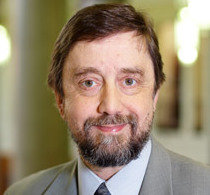
“Think of your JET experience with a long-term view. […] As time passes, you will realize that your experience left you with the desire to accomplish or attain something. Do not rush, but be patient as you seek to do so.”
After graduating from the University of Oxford with a a BA in Japanese Studies, Dr. Mark Williams (Gunma-ken, Maebashi-shi, 1979-81) came to Japan to work as a member of the British English Teachers Scheme (BETS) in Gunma Prefecture. He moved from there to California to pursue a Ph.D. in postwar Japanese literature then joined the University of Leeds, UK, as a Lecturer in Japanese, to become Professor of Japanese Studies a few years later. He has just completed a 4-year term as President of the British Association for Japanese Studies and 5 years as Head of the School of Modern Languages and Cultures at Leeds and is currently on secondment as Vice President for Academic Affairs at Akita International University, Japan.
The Japan I Came to Know
Two Years in Gunma Prefecture
I participated on the British English Teachers Scheme (BETS) Programme for two years from 1979 to 1981. The BETS Programme was proposed by Nicholas MacLean and is also known as the MacLean Scheme. In Gunma Prefecture, I worked four days per week for two years at one base school each year (Maebashi Minami Senior High School my first year and Shibukawa Girl’s Senior High School my second year). The remaining day of the work week I spent visiting senior high schools throughout the prefecture, and I can say I likely visited every senior high school in the prefecture.
At the time, team-teaching classes were not as established as now, and no matter how enthusiastic, attempts to conduct entire classes in English were unfortunately often short-lived. The classes I conducted at the school I visited on Wednesdays were rich in variety resulting in a trial-and-error approach on my behalf. The several hundred-student school body would gather at once, and I would speak to them in English about my home country England, or explain the origin of English vocabulary words or the characteristics of the English language.
I was one of only a handful of foreigner instructors in Gunma Prefecture at the time. As such, I stood out greatly and even made front-page headlines in a local newspaper. My experience began with my arrival in Japan. The principal of my school came to meet me at Narita Airport, and we traveled from there to Maebashi Station. As soon as I exited Maebashi Station, I found myself surrounded by news reporters. One of them asked about my hobbies, and I replied “I enjoy music.” The headlines of the next morning’s newspaper reported, “New foreign instructor likes to sing.”
(New Posts) JET Alum Parenting Blog: “US-JAPAN FAM”
 Heather Wilson Tomoyasu (ALT Ibaraki-ken, 2004-06), previously Manager of Public Relations at the Japanese Chamber of Commerce, is now a newly established stay-at-home mom blogging in Brooklyn on her site US-Japan Fam to hopefully compile the ultimate resource for Japanese-American cross cultural families, delving into the matters of raising children bilingually, bi-culturally, and bi-racially in the Big Apple.
Heather Wilson Tomoyasu (ALT Ibaraki-ken, 2004-06), previously Manager of Public Relations at the Japanese Chamber of Commerce, is now a newly established stay-at-home mom blogging in Brooklyn on her site US-Japan Fam to hopefully compile the ultimate resource for Japanese-American cross cultural families, delving into the matters of raising children bilingually, bi-culturally, and bi-racially in the Big Apple.
 Dreamy Destination Wedding: Three years ago I today we tied the knot, got hitched, jumped the broom, or whatever you like to call it! I walked down the virgin road (that’s what they call the aisle in Japan!! HA!!) in Hawaii of all places!! I’d never been there before, but it seemed like the perfect romantic and beautiful halfway meeting ground for our family and friends to join from America and Japan (as well as from Canada, Australia, and England)… <CONTINUE>
Dreamy Destination Wedding: Three years ago I today we tied the knot, got hitched, jumped the broom, or whatever you like to call it! I walked down the virgin road (that’s what they call the aisle in Japan!! HA!!) in Hawaii of all places!! I’d never been there before, but it seemed like the perfect romantic and beautiful halfway meeting ground for our family and friends to join from America and Japan (as well as from Canada, Australia, and England)… <CONTINUE>
Victor-Victoria, or more like Rick-Riku?: Little Kenzo was born with 100% Japanese eyes. No crease or double eyelid or whatever you call it. They were just like daddy’s and gorgeous! Fast forward 2 months and overnight he developed the double lid… in ONE EYE… <CONTINUE>
Go to the blog to see more posts!!
Comments on entries are always appreciated, and guest bloggers are welcome to use the contact form on the blog site to submit ideas!
JETwit note: CLICK HERE to join the JET Alumni Parents group on Facebook.
New JET Alum Parenting Blog: “US-JAPAN FAM”

Heather Wilson Tomoyasu (ALT Ibaraki-ken, 2004-06), previously Manager of Public Relations at the Japanese Chamber of Commerce, is now a newly established stay-at-home mom blogging in Brooklyn on her site US-Japan Fam to hopefully compile the ultimate resource for Japanese-American cross cultural families, delving into the matters of raising children bilingually, bi-culturally, and bi-racially in the Big Apple.
The first 8 entries are up and ready to roll:
A Little about Me and the Blog: find out more about me and my family (yes, I met my husband at a gay bar, WHAT??), and my plans for the blog.
Marathon of a Birth: discussing my 50 hour labor, natural birth (no meds – YIKES), and the whacked out medical system that billed $25K on a 36-hour hospital stay!
Back to Work – To Go or Not to Go, a New Mother’s Dilemma: you guessed it, this one is all about maternity leave, comparing the US system to that of Japan and a few other countries, and what went into my decision to stay at home.
My Roommate is a Grunter and Poops his Pants: about co-sleeping (same room or same bed) with your children
Sleep Training: Am I the Trainee or the Trainer?: how we got our little one on the Babywise schedule and I’m back to a heavenly 6+ hour consecutive nighttime sleep again!!
Shoot ‘Em Up: The Vaccination Debate: a bit controversial, but in the end you just gotta be informed and make the right decision for your family!
Baby Wearin’ & Stroller Struttin’: I weigh the pros and cons of different ways to get your baby around the city!
What They Don’t Tell You to Expect When You’re Expecting (And Afterward): a hilarious list I compiled for moms and dads alike!
Comments on entries are always appreciated, and guest bloggers are welcome to use the contact form on the blog site to submit ideas!
JETwit note: CLICK HERE to join the JET Alumni Parents group on Facebook.
CLAIR Magazine “JET Plaza” Series: Jessyca Wilcox Livingston (Hokkaido)
Each month, current and former JET participants are featured in the “JET Plaza” section of the CLAIR Forum magazine. The March 2012 edition includes an article by JET alumn Jessyca Wilcox. Posted by Celine Castex (Chiba-ken, 2006-11), currently programme coordinator at CLAIR Tokyo.
***********
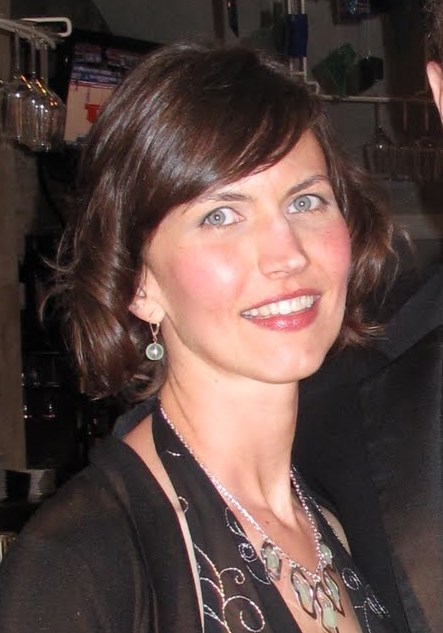
“The fact that the people of Japan are wonderful has only been confirmed with every return visit and every new friend I meet. This is the power of grass roots internationalization and this is the power of the JET Program.”
As the daughter of parents in the State Department, Jessyca (Wilcox) Livingston (Hokkaido, 2003-06) spent her early childhood years immersed in Japan and most of the rest of her youth abroad. After graduating from Rutgers University she worked as a Park Ranger/Ecologist with the National Park Service. Her affinity for Japan led her to return as a JET Program participant. Jessyca spent three years as an ALT in Urahoro-cho, an experience which deepened her love for Japan and its people. Upon returning the USA, she quickly got involved in her local JETAA chapter in the Rocky Mountain region and secured a job at the Consulate General of Japan in Denver as the JET Program Coordinator. Jessyca served as treasurer of RMJETAA from 2008-10, then served two terms as a JETAA USA Country Representative from 2010-2012. She has participated in several conferences ranging from regional to international during her service with JETAA. Jessyca currently serves on the JETAA USA Advisory Board to help to guide and ensure the success of JETAA USA at the national level.
Once a JET, Always a JET
My love affair with Japan started at age one when my family moved to the coastal town of Hayama in Kanagawa Prefecture. My father worked on the nearby navy base and my mother settled into domestic life in Japan while I ran around with the neighborhood kids. I learned Japanese, they learned that there were more than just one kind of people in the world and we all learned that having fun together didn’t depend on what you looked like or what language you spoke. Friendship transcended all of that. That was my first experience with grass-roots internationalization. It was years before the JET Program would be established.
My family moved on to live in other countries, but I was able to return to Japan on several happy occasions. My Japanese language abilities fluctuated, but my Japanese friends remained steadfast. I experienced both the rewards of articulating myself well and the embarrassment of stumbling through sentences and making ungraceful mistakes. Through it all, Japan remained a common thread in my studies and personal life. I studied Japanese in school because I understood it was a vehicle to stay connected to the people and place I loved.
I found the JET Program in a school hallway in the form of a poster. I wrote down the information and filed it away for my future. I knew it had a place in my life. When the time was right, I submitted my application, and waited. Read More
Kyodo News “Rural JET alumni” series: Khalid Birdsong (Osaka)
News agency Kyodo News has recently been publishing monthly articles written by JET alumni who were appointed in rural areas of Japan, as part of promotion for the JET Programme. Below is the English version of the column from January 2013. Posted by Celine Castex (Chiba-ken, 2006-11), currently programme coordinator at CLAIR Tokyo.
***********
Khalid Birdsong (Osaka-fu, 2003-05) attended Howard University, in Washington D.C. from 1993-1997. He graduated with a Bachelor’s Degree in Graphic Design. He is currently an Art teacher at a private school in Palo Alto, CA for grades Kindergarten through 4th. He is also a freelance cartoonist and webcomic artist. His comic about living in Japan can be found at www.friedchickenandsushi.com .
I couldn’t speak their language!
I moved to Japan in the summer of 2003 to work as an Assistant Language Teacher (ALT) in Junior High School for the JET Programme. I was placed in a small town called Shimamoto near the mountains in-between the cities of Osaka and Kyoto. I ended up living there for two years. Two years full of wonderful experiences and pleasant surprises. As an African-American man from Atlanta, Georgia, living in Japan also had its challenges! One of the most difficult was learning the Japanese language.
JQ Magazine: Life After JET on YouTube
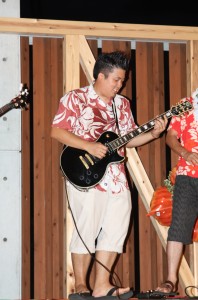
JET alum Eliot Honda: “With my year coming to a close, I wanted to create a set of videos that would not only explain what to expect as an ALT, but also what to expect as an Uwajima ALT. I had truly come to love this city, and I wanted to show off some of its beauty and history.”
By Eliot Honda (Ehime-ken, 2009-2012) for JQ magazine. Born and raised in Honolulu, Eliot was an ALT placed in Uwajima City of Ehime Prefecture. Prior to JET, Eliot worked as a freelance video editor mainly in the commercial and corporate world in San Francisco. Following JET, he returned to Honolulu and joined his mother in real estate. He currently has made a JET Introduction video, and has a YouTube series in the works called Sister City Ties, showing the beauty of the friendship between Honolulu and Uwajima.
My father always preached that “everything happens for a reason.” My being placed in Uwajima was no exception. Uwajima, as I would come to find out, had strong ties to my home of Hawaii. King Kalakaua of Hawaii and Date Munenari of Uwajima had met in 1881, becoming Japan’s first contact with a head of state. Uwajima and Hawaii would meet again in 2001 when the Ehime Maru, a high school fishing vessel, would be struck by a U.S. submarine. Nine lives would be tragically lost, including four high school students.
News of the tragedy spread quickly through Hawaii, causing the people to do everything they could to help the Uwajima families. Whole those families could have shown hate and anger toward the people of Hawaii, they instead embraced the people of the Aloha State with open arms. Through this tragedy, a friendship between Honolulu and Uwajima was born, giving way to the creation of a sister city relationship. To help strengthen the ties between the two cities, the mayor of Uwajima requested ALTs who were born in Hawaii. I found myself to be one of the lucky few chosen to represent Hawaii there as my time on the JET Program began.
I came to Uwajima with all these grand ideas of using video in my lessons. A month into my first year as an Uwajima ALT, I came to the realization that utilizing video in the classroom or in school for that matter would be an impossible task. If finding students willing to speak English in front of the class was difficult, finding students to speak English in front of a camera would be like moving the Hawaiian Islands with a fish hook. (I think only Hawaii people will get that reference.)
Feeling a bit defeated, I sat in my apartment and contemplated how I could put everything I’d learned in the multimedia world to good use. As fate would have, it I was asked by one of the Ehime Maru family members to join the Ehime Maru memorial service, and create a documentary not about the tragedy, but about the friendship between Honolulu and Uwajima. The documentary was for the schools in Ehime, and upon completion, DVDs were given to a large number of schools. This single video became the start of several videos for both the sister city exchange and the promotion of Uwajima.
JET and the Rotary Peace Fellow connection: William Nealy, Jr.
By Mark Flanigan (Nagasaki, 2000-04), Program Director at the Japan ICU Foundation in New York City and former Rotary Peace Fellow in Tokyo.
As a Business Development Manager at Impact Japan, William Nealy, Jr. (Oita, 1994-97) works with mainly ‘gaishikei’ (non-Japanese) companies in Japan to understand their leadership and team development needs. William works in partnership with these companies to design effective solutions to “future-proof” their operations in Japan. He’s passionate about finding ways to help Japanese and foreign clients to align their people development strategies with their overall business strategy, and he loves the rush and satisfaction of helping clients achieve their goals. He is also multilingual- speaking English, Japanese and Spanish. In the Q&A below, William explains more about his own JET and Rotary Peace Fellow experiences in Japan, and how they have literally changed his life.
1) Thanks for answering our questions, William! Where and when were you a JET?
Sure thing! I was in Oita City from 1994-97.
2) What was your role? (ALT, CIR, SEA)
I was a Ken ALT, mainly based at Oginodai High School, with regular visits to a few junior high schools.
3) Did you have any previous background in Asian languages and cultures?
I had studied Japanese at university for four years, so I had a decent head start. But realized pretty quickly when I actually got to Japan that I had a lot of room for improvement in my Japanese skills. But living in Oita, as opposed to a place like Osaka or Tokyo, I was relatively immersed in the culture and language.
4) What did you do following your JET service?
Although I had traveled within the US before JET, my time on the JET Program was my first time abroad. It really opened up a whole world for me, and was the catalyst for me wanting to live, breathe and experience more of the world. Living in Japan, in relatively rural Oita, triggered my curiosity for seeing the world. I also felt deeply that I wanted to continue to develop a career with a global scope and somehow contribute to developing people. So after JET, I set out Read More
2013 JETAA Tokyo Mentor Program
A request from Christian Tsuji (Miyazaki-ken, 2004-08), current JETAA Tokyo Career Chair. Originally posted on the JETAA Tokyo Facebook group. Posted by Celine Castex (Chiba-ken 2006-11).
I am proud to announce the kick-off of the 2013 Mentor Program.
The purpose of the program is to provide current JETs from all parts of Japan and new alumni with a resource for developing their careers in Tokyo. We are looking for mentors from all walks of life with (in principle) five years work experience post-JET and two years in Tokyo. This is a chance for you to build your own resume and leadership skills while giving back to the JET community. As a mentor, we would expect the following contributions:
– Monthly contact with your mentee through face-to-face meetings, telephone, Skype, Facebook or email
– Advice and suggestions on researching career opportunities in the Tokyo area
– Feedback on job search materials (resume, rirekisho, letters of recommendation, etc.)
– If possible, attendance to the JETAA Tokyo Mentor Program Kick-off in February/March (TBD) and the Program Finale in June/July (TBA)
If you think other resources would benefit your mentee, we encourage you to offer those as you see fit. Please note that you will NOT be expected to offer internships to your mentee. The deadline for mentor sign-ups is February 28th, 2013. We plan to assign mentors and mentees within two weeks of that date. This year we are turning the tables and advertising this to ALL current JETs nationally. Thus we are expecting quite an interest. If you know anyone who like to be a Mentor, please pass this information along. Thank you for your attention and support.
To sign up, please go here!
CLAIR Magazine “JET Plaza” series: Matthew Fuller (Aichi)
Each month, current and former JET participants are featured in the “JET Plaza” section of the CLAIR Forum magazine. The December 2011 edition includes an article by JET alumn Matthew Fuller. Posted by Celine Castex (Chiba-ken, 2006-11), currently programme coordinator at CLAIR Tokyo.
***********
旧友との再会2010_1.jpg)
“Often, you are the only foreigner that people will ever get to know, and so you are truly an Ambassador to Japan from the outside world – and that’s a powerful platform.”
Matthew Fuller (Aichi-ken, Toyota-shi, 1997-99) is originally from Austin, Texas. He came to Japan on the JET Programme and lived and taught in the rural village of Shimoyama which later merged to be part of Toyota City in Aichi Prefecture. After a master’s degree in Public Affairs from the LBJ School of the University of Texas, he joined the US Department of State. Matthew Gardner Fuller is currently the special assistant to the US Ambassador to Japan John V. Roos in Tokyo where he has served since 2009.
What was one the most positive aspects of your experience on the JET Programme?
One of the best things for me was the lifelong connections I made with the people in my community. What started out as sharing an occasional drink with some people in Shimoyama, ended up growing into long-term friendships. In fact, one of the friends I made during my time on JET has continued to keep in touch with me by calling every month to chat. He even continued to check in on me while I was on assignment in Baghdad. It’s these connections that really made my time on JET special. And these ongoing connections have provided numerous opportunities to go back and visit Shimoyama. For example, I was recently invited to and attended the wedding of a former student. I also had the chance to accompany Ambassador Roos to Shimoyama to help provide a firsthand look at the long-lasting grassroots exchange that the JET Programme is capable of fostering. Read More
Kyodo News “Rural JET alumni” series: Marion Lagan (Okayama)
News agency Kyodo News has recently been publishing monthly articles written by JET alumni who were appointed in rural areas of Japan, as part of promotion for the JET Programme. Below is the English version of the column from January 2013. Posted by Celine Castex (Chiba-ken, 2006-11), currently programme coordinator at CLAIR Tokyo.
***********
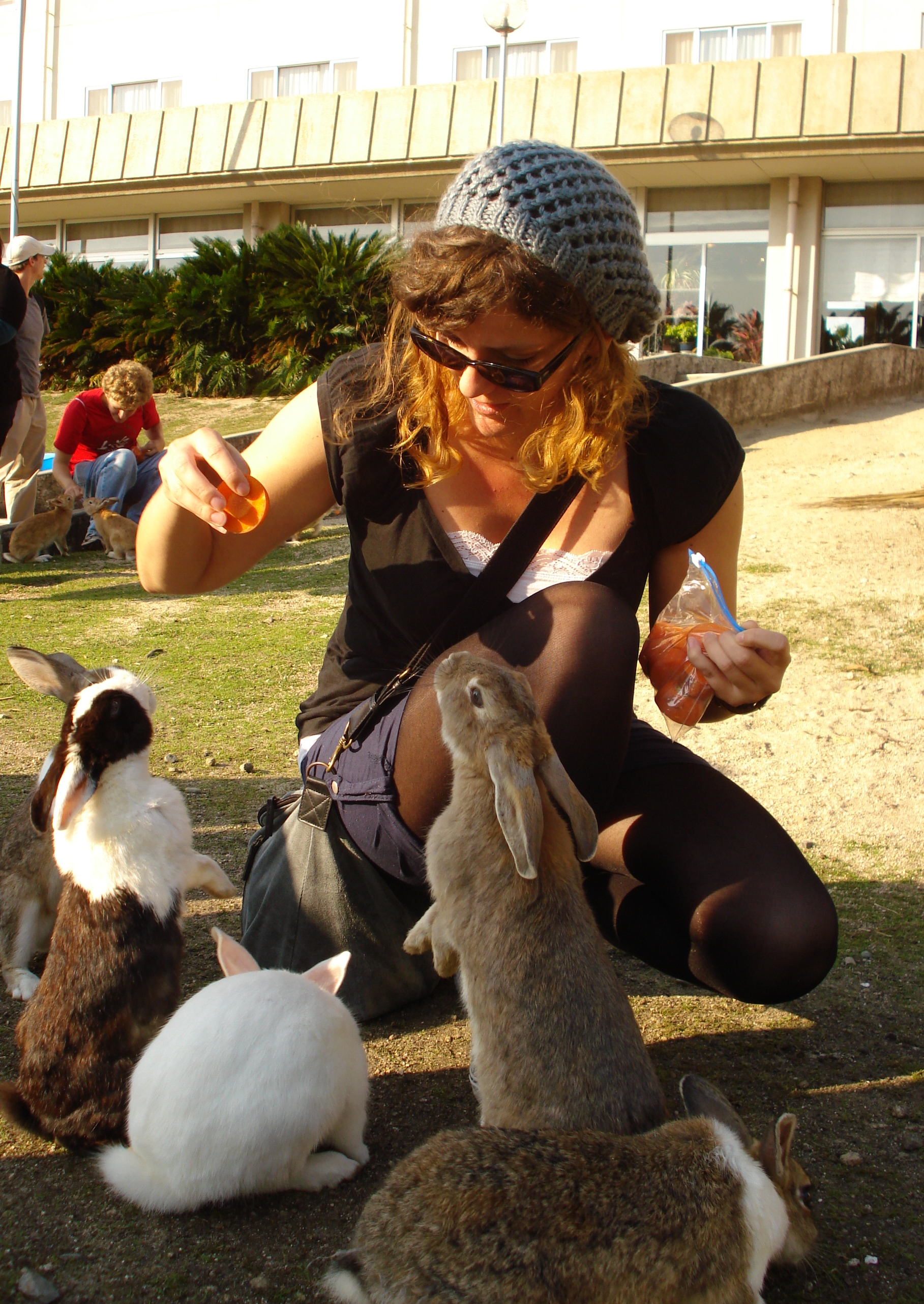
I hope I will have another chance to spend time there so, to the question “How is it to live in Tokyo?” I can finally answer “It’s good, but not as good as it was living in Okayama.”
Marion Lagan (Okayama-ken, Soja-shi, 2007-09) was born in the Southwest of France, then lived in many different places throughout France until she graduated high school. She moved to Paris where she studied French literature and Japanese. Once she got her teaching certificate, she applied to the JET Programme in order to get a first experience working abroad as well as furthering her knowledge of Japan and its culture. She spent two years in Okayama Prefecture teaching French and English and eating peaches. Once back in France, she got an MBA from HEC Paris. She is now working for L’Oréal as brand manager. In her spare time, she likes watching movies, making movies, reading novels as well as essays and planning her next trip to Japan.
All roads lead to Japan
When people learn I’ve spent two years in Japan, their first question always is “So, how is it to live in Tokyo ?” and the reaction I get when I tell them I don’t know since I lived in Okayama is, at best “What, you mean Hiroshima ?” or at worst “Is that even in Japan ?”. Yes, Okayama is in Japan. To me it is Japan.
From 2007 to 2009, I taught French and English to high school students whose age ranged from 15 to 19 year-old. I was a teacher in France and JET was a great opportunity to experience another lifestyle as well as work-style. I saw –and helped, I hope, students grow up and they definitely made me grow up too. It has been three years now I have left Japan and the more important memories seems to have sharpened so I will recount the ones that impressed me the most. Read More

